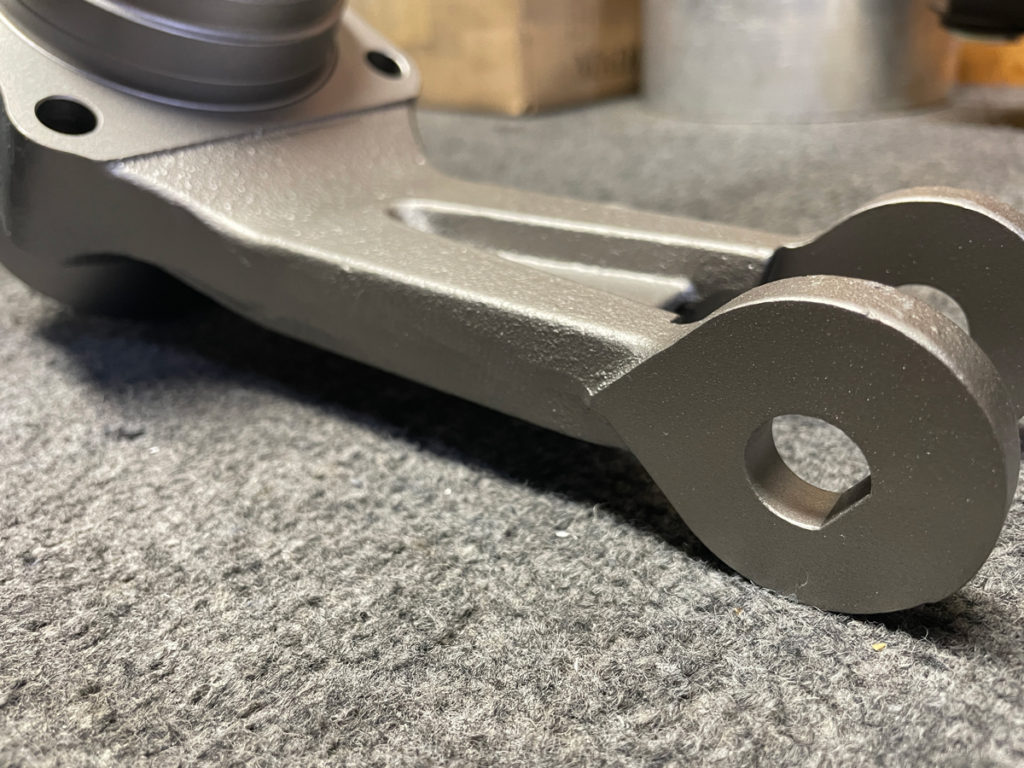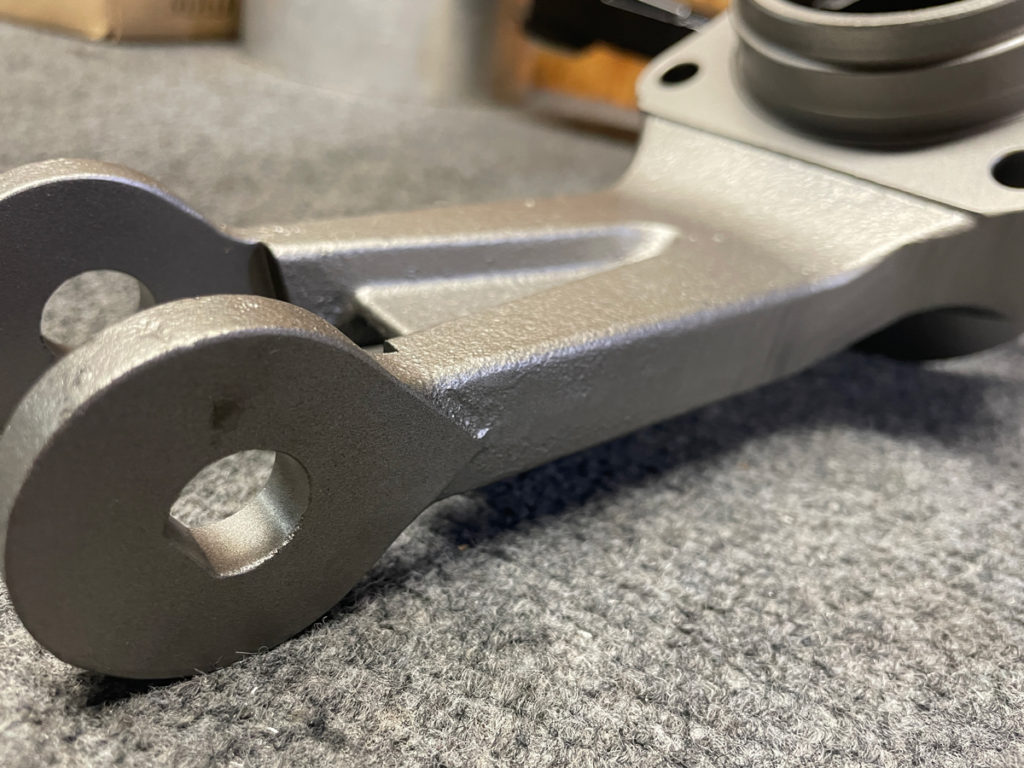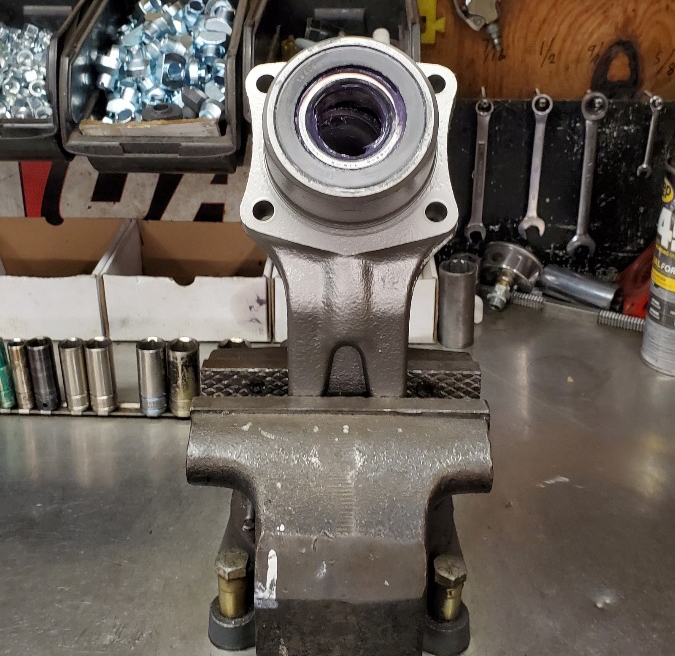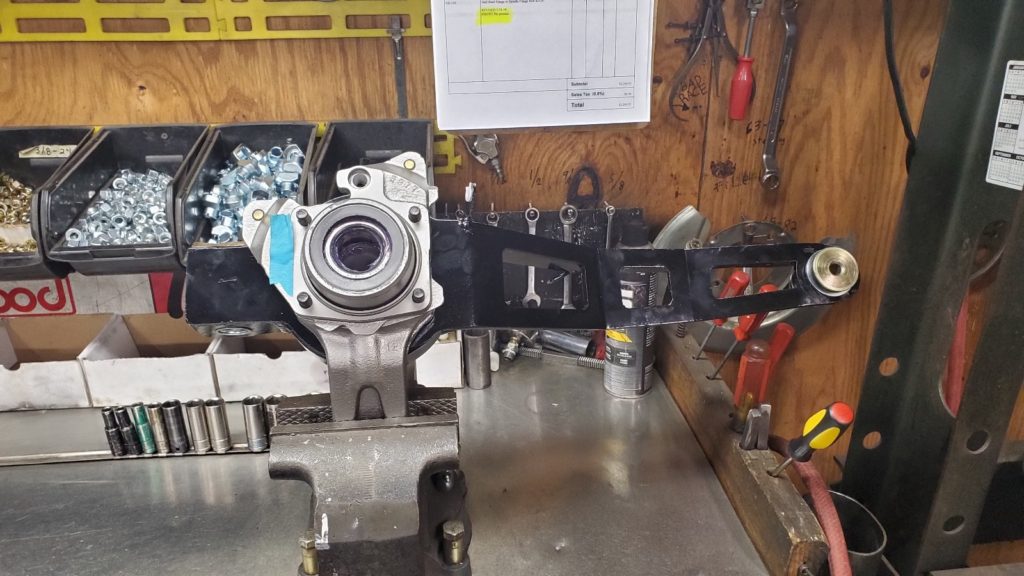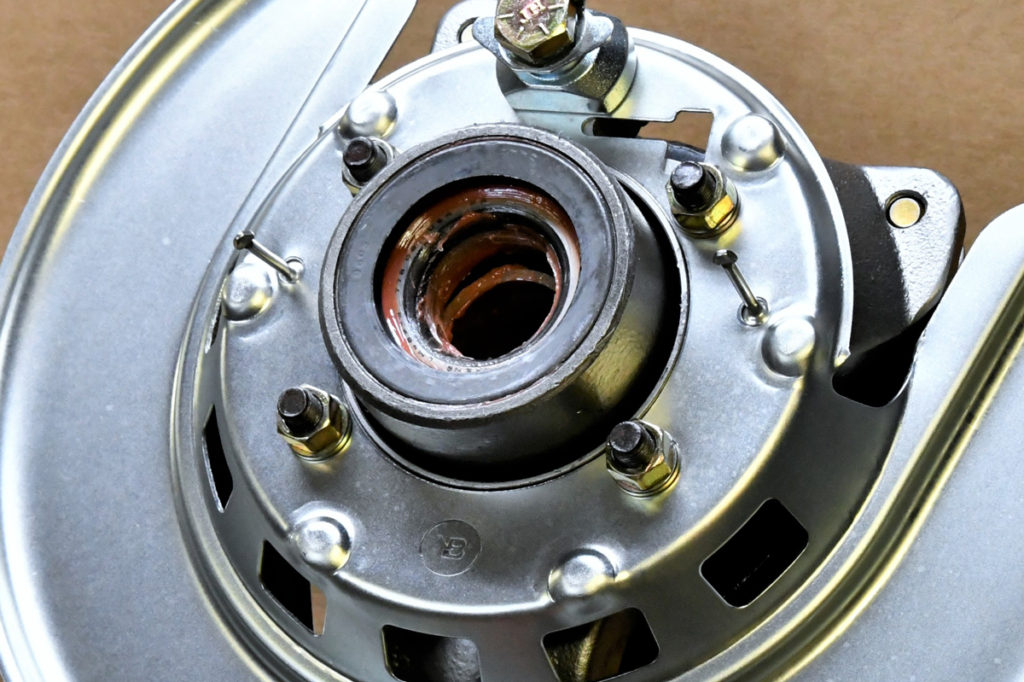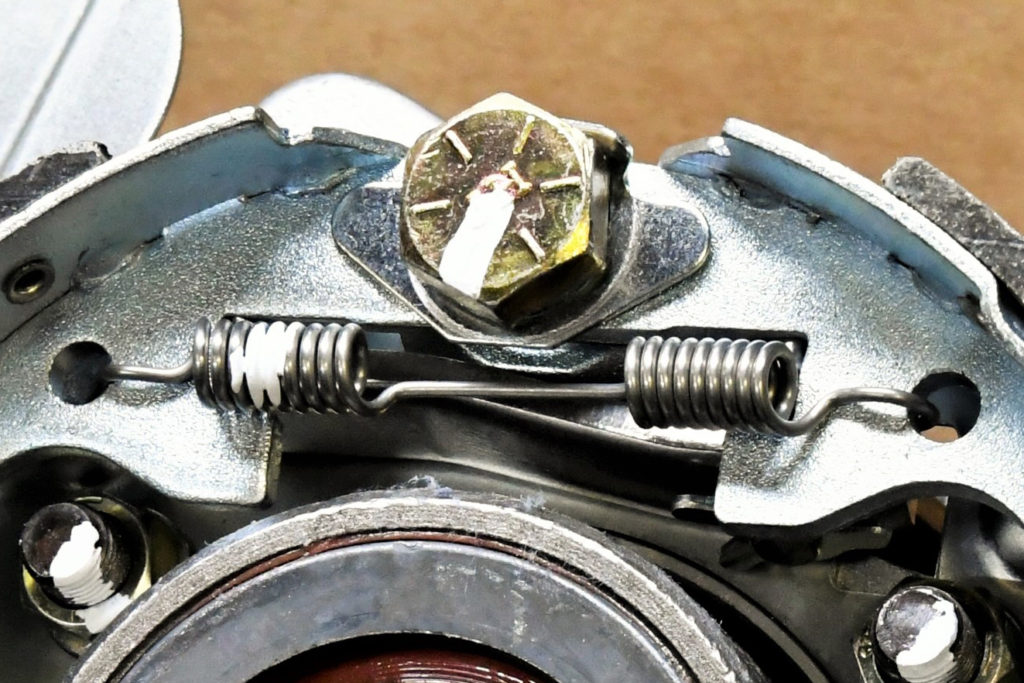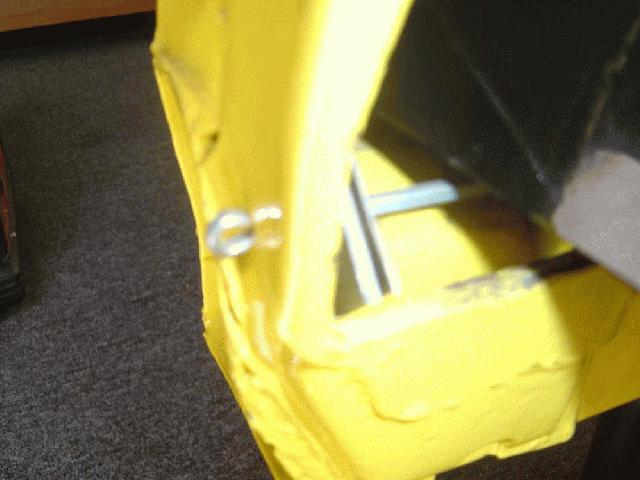63-82 Loaded Bearing Support Instructions
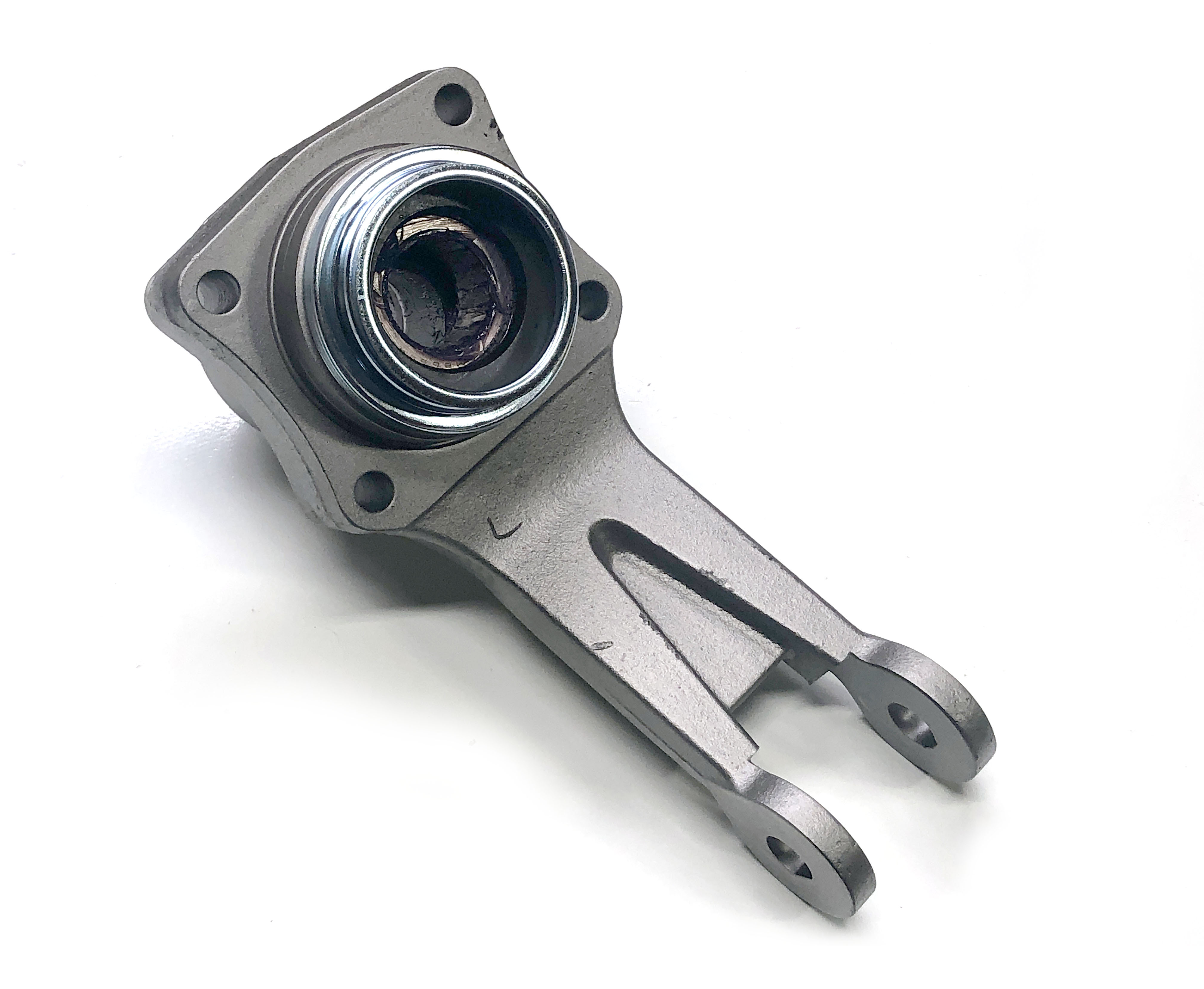
Please read before beginning and pay attention to Step 12.
Our loaded bearing supports are pre-built so you can do the rest of the assembly on your own. The End play should be set to .0005” – .002”. If you have the ability to mic out the bearing surfaces on the spindle, we HIGHLY recommend you do. The Inboard measurement is 1.189” and the outer is 1.377”. Anything under .002 or less your spindle is undersized and recommend that you replace the spindle with a new one. Anything higher, the spindle is swollen and needs to be replaced. When removing rivets from factory spindles, they can cause burs or the metal can get deformed around the rivet hole area. Carefully feel for these and use an angle grinder to smooth them out, this WILL affect your rotor runout. If reusing factory spindles and they still happen to be in the old bearing assemblies, do a runout on the face of the spindle to determine if they will be re-useable. Runout should be no more than .005”.
To determine which side is LH & RH, place the bearing support on a table with the outer bearing on the table and the legs facing you like shown above. The legs will have 2 holes for the shock mount to pass through. One is a 3/4 hole (D shaped hole), the other is a full circle. The side with a flat will determine if it’s a LH or RH bearing support. The side with the flat will be towards the back of the car.
1. Put the bearing support in a bench vice with the outer bearing facing you. The inboard side will have a silver dust shield on it.
2. Install the trailing arm with the 4 mounting studs pre-installed. Make sure the flat in the shock mount hole is towards the back of the t-arm.
3. Install the caliper mounting bracket. Be careful here b/c caliper
mounting brackets are LH & RH as well. The long flat should go
toward the front of the car. ***Pro Tip If you have a packing
peanut/small piece of cardboard/paper, put it in the divot on the
caliper mounting bracket and tape it in place with masking tape.
This will prevent the Parking Brake Side Pin from falling into the
hole which makes it difficult to install the side spring.
4. Install the backing plate with BOTH side pins. We recommend that you tape both on with masking tape or alike.
6. Install the parking brake anchor block with guide plate (wings up) and ½”-20 bolt. Torque value is not critical here b/c there is no load on the bolt. If a value is needed, 60 ft/lbs is sufficient. Bend the 2 top tabs up to the side of the bolt. This prevents the bolt from loosening up. ***Pro Tip Use an adjustable wrench and place it over the anchor block. Make sure the long flats on the anchor block are parallel to the ground if you will. As you tighten the anchor block bolt, the wrench will prevent the block from rotating.
8. Install the parking brake hardware and shoes. We like to put the star adjuster on the RH.
9. Remove the assembly from the bench vice and set it on top of the spindle. Once the spindle is in place, set the 2 pieces into a press. Place the spindle flange on top of the spindle and begin pressing the spindle into place. After a few pumps on the press, make sure the splines on the spindle flange are aligned with the splines on the spindle. Once that is aligned continue pressing the assembly together while rotating the assembly left to right until fully seated.
10. Remove the spindle flange and carefully remove the assembly from the press and place it back into the bench vise.
11. Install the rotor with lug nuts and aligning the parking brake hole in the spindle to the parking brake hole on the rotor. If the rotor does not have a parking brake hole, STOP and find the correct rotor. All 65-82 rear rotors will have a parking brake hole, front rotors will not.
12. Using a dial indicator with a magnetic base, place the indicator on the outer most edge of the friction surface. The rotor runout needs to be .005” or UNDER. If the runout is higher, you need to diagnose the problem and see if it’s the rotor or the spindle being used. If the spindle has a high run out and it’s already been pressed in, it needs to be removed and replaced. If it’s removed, new bearings are recommended since these bearings are a press fit and defeats the purpose of why you purchased a built assembly in the first place. If the runout is in the rotor, find the high spot and grind it out on the mating surface side.
14. Install the spindle flange with washer and nut. Torque to 100 ft/lb. If the cotter pin hole doesn’t line up, GO TIGHTER.
15. The assembly should be complete and ready bolt into the car. We recommend removing the rotor for installation. It’s 20 lbs lighter without it on. Once the assembly is in the car, you can install the rotor by aligning the 2 marks you put on the spindle and rotor. Secure it with a lug nut until the tire is ready to go on.
Contact us: vettes@vansteel.com / 1-800-418-5397 / Facebook.com/vansteelcorvettes / instagram.com/vansteelcorvettes / YouTube.com/vansteelcorvettes

